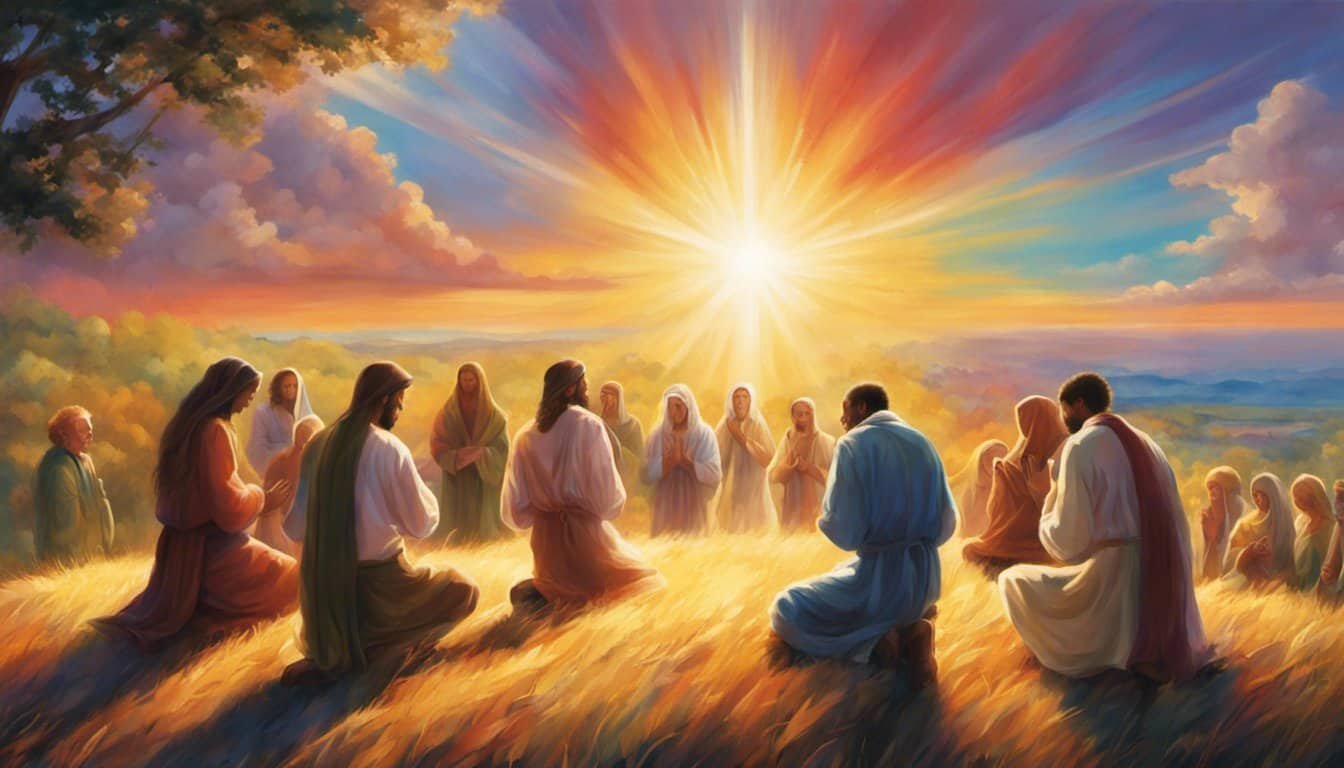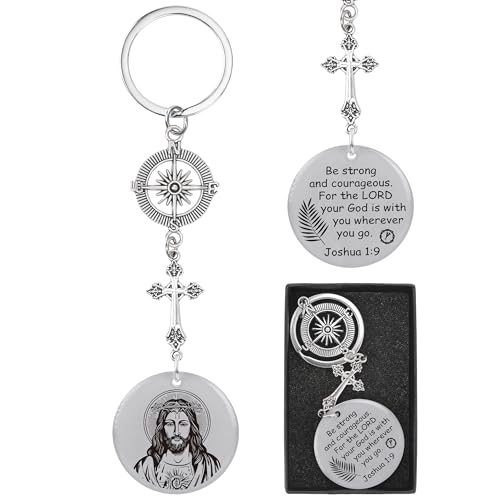Ever wondered how ancient civilizations kept track of time? The Old Testament offers some fascinating insights into how people understood and measured a year thousands of years ago. Unlike our modern calendar, which is pretty straightforward, the biblical year had its own unique rhythm and structure.
In the Old Testament, a year wasn’t just a simple 365-day cycle. It was deeply intertwined with agricultural seasons, religious festivals, and lunar cycles. By diving into these ancient texts, we can uncover how our ancestors perceived the passage of time and how it influenced their daily lives and spiritual practices. Let’s explore how a year was defined in those ancient days and what it meant for the people living through it.
Understanding Time in the Old Testament
The Concept of a Year in Ancient Contexts

In the Old Testament, the concept of a year wasn’t like what we think of today. Back then, a year tied closely to agricultural cycles and religious observances. They didn’t have wall calendars or smartphone reminders. Instead, they watched the moon, tracked the seasons, and marked key events within their community.
The Hebrew calendar, which many references in the Old Testament rely on, is lunisolar. This means it considered both the moon’s phases and the solar year. Each month began with a new moon, leading to months of either 29 or 30 days. They didn’t have our exact methods but stayed remarkably precise using direct observation of nature.
Calendar Systems Used in Biblical Times

The primary calendar in use during biblical times was the Hebrew calendar. It had lunar months and occasionally added an extra month to stay aligned with the solar year. This intercalary month, called Adar II, kept the calendar in sync with the agricultural seasons, crucial for planning festivals like Passover and Sukkot.
Genesis 7:11, where Noah’s flood started on “the seventeenth day of the second month,” reflects this system. Time tracking honed by traditions and necessity, making it intrinsic to their daily life.
However, apart from the Hebrew calendar, other calendars influenced biblical regions. For instance, the Egyptians used a solar calendar, while Babylonians had their own lunisolar system. These systems impacted trade, interaction, and historical records in the region, but the Hebrew method was the primary system within the Bible’s narrative.
So, when reading about years or months in the Old Testament, remember they blend lunar cycles, solar cycles, and agricultural rhythms. It’s a fascinating reminder of how intertwined their lives were with the natural world and divine observances.
How Long Was a Year in the Old Testament?
When diving into the Old Testament, one thing that often jumps out is how differently time was measured compared to today. Ancient civilizations had unique ways of tracking time, and the Hebrew calendar, being lunisolar, was pivotal back then. They aligned their months with lunar cycles and synchronized their years with solar events. Let’s break it down.
Evidence from Genesis and Exodus
The books of Genesis and Exodus give us a glimpse into ancient timekeeping. Genesis 7:11 mentions “the seventeenth day of the second month.” This indicates that specific days within months were crucial in their calendar system. Further, Exodus 12:2 drives the point home by stating, “This month shall be the beginning of months for you; it is to be the first month of the year to you.” It’s clear this marked the start of their ecclesiastical year during Passover.
Noah’s story, in particular, offers insight. Genesis 8:3-4 shows the flood lasted 150 days, equivalent to five 30-day months. From this, some scholars infer the ancient Hebrew calendar primarily used 30-day months, making a typical year about 360 days. However, intercalation, or adding an extra month, occurred over certain periods to keep the calendar aligned with seasons.
Scholarly Interpretations and Debates
Various scholars have delved into the intricacies of the Old Testament calendar. While some propose a strict 360-day year based on texts like Genesis, others argue for a lunisolar year with 354 days, adjusted by adding a 13th month periodically. For example, experts like Richard Parker and Waldo Dubberstein have suggested these adjustments were crucial in maintaining the agricultural cycle.
Debates aside, it’s widely accepted that the Hebrew calendar was not static. It evolved, incorporating influences from Babylonian and Egyptian systems. These interactions highlight how dynamic and adaptable ancient timekeeping practices were.
Understanding the length of a year in the Old Testament requires more than just looking at days and months. It demands acknowledging the blend of lunar and solar cycles, agricultural needs, and religious observances that shaped these ancient times.

So, next time you’re reading Genesis or Exodus, remember the intricate dance of celestial bodies and seasonal rhythms that determined what a year looked like back then.
Comparing Biblical and Modern Calendars
Have you ever wondered how the ancient Hebrews kept track of time compared to our modern calendar? It’s fascinating to see the differences and similarities. Let’s dive in!
Differences in Month Lengths and Year Start
In the Old Testament, the Hebrew calendar was lunisolar. This means it was based on both the moon and the sun, unlike our modern Gregorian calendar, which is strictly solar. Each month began with a new moon and typically lasted 29 or 30 days. Because a lunar year (about 354 days) is shorter than a solar year (about 365 days), they had to make adjustments. Sound complicated? It was! Every few years, they inserted a leap month to keep the calendar in sync with the agricultural and religious seasons.
For example, the year began in the spring with the month of Nisan, which often corresponds to March or April. Contrast this with our modern year that starts in January. These calendar shifts were crucial for aligning with key events and seasonal cycles.
Impact on Festivals and Religious Observances
The way time was tracked had a big impact on festivals and religious observances. Many Old Testament feasts and festivals were scheduled according to the lunar calendar. Passover, for instance, took place in Nisan, on the 14th day of the first month. That’s mid-spring for us, right around Easter time.
Imagine trying to plan holidays without a fixed annual date—that’s what they did! The Feast of Tabernacles, another significant event, was held on the 15th day of the seventh month, Tishrei, often coinciding with our September or October.
These timelines weren’t just for religious events but were deeply tied to the agricultural calendar, too. Harvest festivals and planting seasons needed careful calibration. By integrating lunar and solar observations, the Hebrews created a flexible but complex system that underscored their cultural and spiritual life.
Implications of Calendar Differences
Understanding the ancient Hebrew calendar’s structure has profound implications for theology and historical chronology. By diving into these differences, it helps us grasp the context of biblical events and their modern-day interpretations.
Theological Significance
The Hebrew calendar’s unique structure directly influences theological interpretations. Timekeeping in the Old Testament centered around religious observances, festivals, and agricultural cycles. For instance, the Feast of Passover, which commemorates the Exodus from Egypt, had to align with specific lunar months in the spring.
Each of these observances had significant spiritual meanings, tying the people’s faith to natural rhythms. God commanded these periods (Leviticus 23) to ensure the Israelites remembered their covenant with Him. It’s evident that the length of months and years, whether lunar or solar, shaped how these religious events were practiced. Small adjustments in the calendar could lead to significant variations in how these important festivals were observed.
Historical Chronology Challenges

When comparing the Hebrew calendar to our modern Gregorian calendar, we face some challenges. The Hebrew calendar’s reliance on lunar cycles means months varied in length, typically either 29 or 30 days. This caused a bit of drift compared to the solar year, necessitating the occasional insertion of a leap month.
Scholars have noted that this discrepancy creates difficulties when pinpointing exact dates of historical events. For instance, two scholars might place the same event in different years based on different interpretations of the calendar structure. Plus, the names of months and the methods of intercalation (adding extra days or months) varied over time due to influences from Babylonian and Egyptian calendars.
These differences impact our understanding of biblical chronology, making it challenging to align events with absolute dates. This was especially problematic when trying to align biblical events with external historical records from neighboring cultures.
Understanding these calendar disparities doesn’t just offer historical insights—it deepens theological understanding and enriches spiritual practices, helping to foster a robust connection to the biblical text.
Conclusion
Exploring the ancient Hebrew calendar has been an enlightening journey. It’s fascinating to see how their timekeeping practices were influenced by neighboring cultures and how these practices shaped religious observances and theological interpretations. The complexities of the lunisolar system and its impact on biblical events offer a deeper appreciation for the historical and spiritual context of the Old Testament.

By understanding these ancient methods, we can better connect with the biblical text and its teachings. This knowledge not only enriches our spiritual practices but also provides valuable insights into the historical chronology of the era. I hope this exploration has sparked your curiosity and deepened your appreciation for the intricate relationship between timekeeping, faith, and history.
Frequently Asked Questions
What is the Hebrew calendar?
The Hebrew calendar is a lunisolar calendar used in Jewish tradition. It bases months on lunar cycles and adjusts to the solar year, incorporating leap months to stay in sync with agricultural and religious seasons.
How does the Hebrew calendar differ from the Gregorian calendar?
The Hebrew calendar is lunisolar, meaning it accounts for both lunar cycles and the solar year, while the Gregorian calendar is solar-based. This causes differences in month lengths and the inclusion of leap months in the Hebrew calendar.
What influences shaped the Hebrew calendar?
The Hebrew calendar was influenced by Babylonian and Egyptian timekeeping systems. These influences are evident in the structure and evolution of the Hebrew calendar over time.
Why are lunar cycles important in the Hebrew calendar?
Lunar cycles determine the months in the Hebrew calendar. Festivals and religious observances are scheduled according to these cycles, aligning with significant biblical events and agricultural seasons.
How does the Hebrew calendar handle leap years?

The Hebrew calendar adds a leap month, Adar II, to align the lunar cycle with the solar year. This adjustment occurs seven times in a 19-year cycle.
What is the theological significance of the Hebrew calendar?
The structure of the Hebrew calendar enhances the understanding of biblical events and their timing. It deepens theological interpretations and fosters spiritual practices by connecting believers more closely with the biblical text.
How does understanding the Hebrew calendar enhance historical insights?
Understanding the Hebrew calendar helps align biblical events with absolute dates and external historical records. This alignment provides richer historical context and supports a deeper comprehension of religious texts.
What challenges arise from the Hebrew calendar’s complexity?
Aligning biblical events with exact dates can be challenging due to variations in month lengths and the periodic insertion of leap months. These complexities require careful consideration in historical and theological studies.












